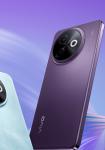There's a video playing these days at New York's Museum of Modern Art about a curvaceous cell phone called 'Morph'. Unlike your typical phone, this one's form-fitting: It wraps around your wrist like a bracelet when you're not using it for calls. It also kills germs and looks out for your health by 'sniffing' the surrounding air and analyzing your sweat.
And oh yeah, it's made with a derivative of insulin. Not all of it. There's still plenty of the silicon, metals, and synthetic materials commonly used to make consumer electronics. But the Morph, which is Nokia's equivalent of a concept car, is but one hint of an emerging body of research that taps into biology for the good of gadgetry.
Viruses, silkworms, salmon sperm, and potatoes are among the multitude of living organisms that scientists at companies and universities are trying to harness to make better parts for computers, MP3 players, cell phones, and other devices.
In addition to Nokia, companies pursuing this path include IBM, Motorola, Fujitsu, Honeywell, Hewlett-Packard, and dozens of startups.
Seeking the strength of spider's silk
And they are starting to see encouraging results. "Morph is a dream based on real technology," says Mark Welland, head of Nanoscale Science Laboratory at the University of Cambridge, which is collaborating with Nokia on insulin research.
"Nothing in this video is science fiction." In the past year, Nokia and University of Cambridge scientists have been melding proteins found in insulin into a material with the strength of spider's silk, which is as strong as steel and tougher than just about any other naturally occuring biological substance.
The bioscientists are building on half a century of research that had, until recently, focused chiefly on medicine. Biomaterials - materials that use part of a living structure - have long been used in artificial joints, dental implants and heart valves. "Now, we are using the same technology for making devices," says Rajesh Naik, biotechnology research lead at Air Force Research Laboratory, who is developing a thin coating made with silkworm silk. Applied to the outer shell of a device, this film could act as a sensor that, when touched, might detect that you're coming down with the flu. "(Biomaterials) can be the silicon of the future," Naik says.
While Naik's innovation may take 10 years to get to market, biomaterials are already being pressed into service, thanks in no small measure to the rising price of fossil fuels.
In addition to powering factories, crude oil derivatives are primary ingredients in the petrochemicals used to make traditional plastics. While so-called 'bioplastics' also contain petroleum-based chemicals, starch-based resins derived from crops such as potatoes, corn, tapioca, and wheat can account for half of the final product's makeup.
Rising oil prices create a tipping point
It's not exactly cheap to make bioplastics, but the spike in oil prices has reached a tipping point where it makes sense to explore alternatives. That helps explain why three top electronics makers are testing a new bioresin introduced by a company named Cereplast last October. The device makers, which Cereplast declined to name, may use the resin in casings and possibly components for mobile phones and laptops. At today's prices, Cereplast's bioplastic, which is not biodegradable, costs about as much as traditional plastic.
The selling point, says Cereplast CEO Frederic Scheer, is that manufacturers "want to be protected from volatility in oil prices. Starches are a lot less volatile in price."
Borrowing from biology can also bestow new possibilities for engineering electronics. "We can go to thinner structures and create materials where we can control their elasticity," says Tapani Ryhanen, who heads the Nokia-Cambridge lab at the university. "It's one additional degree of freedom" in electronics design.
Just take a look at the battery that Massachusetts Institute of Technology researcher Angela Belcher is building with viruses that are nontoxic to humans. These viruses help molecules of gold and other chemicals bind together, catalysing energy-producing reactions more efficiently than today's batteries. That means a virus-based battery could be 75 per cent smaller.
"Biology is very efficient at packaging things," Belcher explains. Her latest prototype is only three microns in size, or 25 times smaller than the diameter of a human hair, yet it could generate enough energy to power a small light or a hearing aid.
A virus-based battery would also offer another compelling trait: It would be up to 80 per cent biodegradable, Belcher says. Today's typical battery is loaded with toxic substances such as lithium and lead that can seep into water and soil.
Building a better light bulb with DNA
Belcher isn't the only one tinkering with microorganisms. IBM researchers are using bacterial DNA to create superdense memory chips that would allow cell phones to store a terabyte of data, or about 1,000 digital copies of Encyclopedia Britannica.
By contrast, Apple's most capacious iPhone offers just 16 gigabytes of memory. The IBM scientists are essentially shaping the DNA strands into a scaffolding for memory. The structures attract tiny wires that assemble into memory circuits. After the self-assembly is complete, the DNA is dissolved or removed by heating.
Researchers are also trying to exploit DNA to make a better light bulb. Andrew Steckl, director of NanoLab at the University of Cincinnati, has used the genetic material from salmon sperm to make light-emitting diodes that last three to five times longer.
Today's LEDs, used to illuminate everything from Christmas tree lights to glowing wallpaper and watch displays, rely on molecules called luminophores that naturally generate light.
Problem is, these luminophores collide and knock each other out of commission, reducing the life of the bulb and the amount of light being produced. Steckl has found a way to insulate luminophore molecules from one another using spirals of the DNA. "You get high brightness and high [energy] efficiency," he says.
Of course, whether and when many of these creature-based technologies will arrive on the market is unclear. Yet, as researchers delve deeper into nature's toolbox, it stands to reason that at least some will crawl to commercial life.
"A year ago, I didn't think we'd be able to make these (virus battery) materials for larger electronics," says Belcher. "But now, I think we might be able to even make batteries for cars."






 © 2025
© 2025